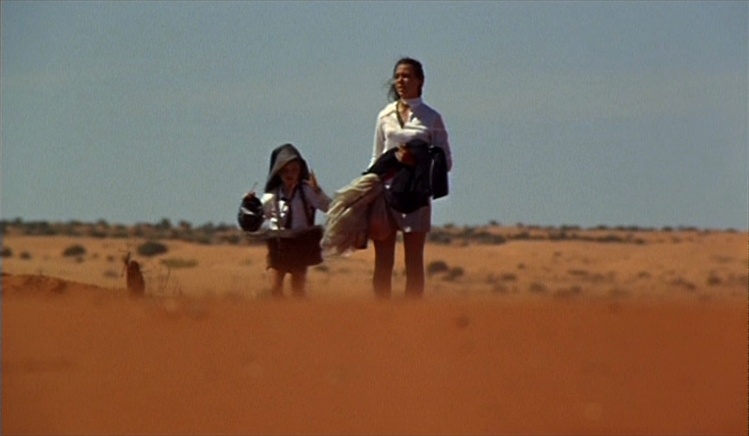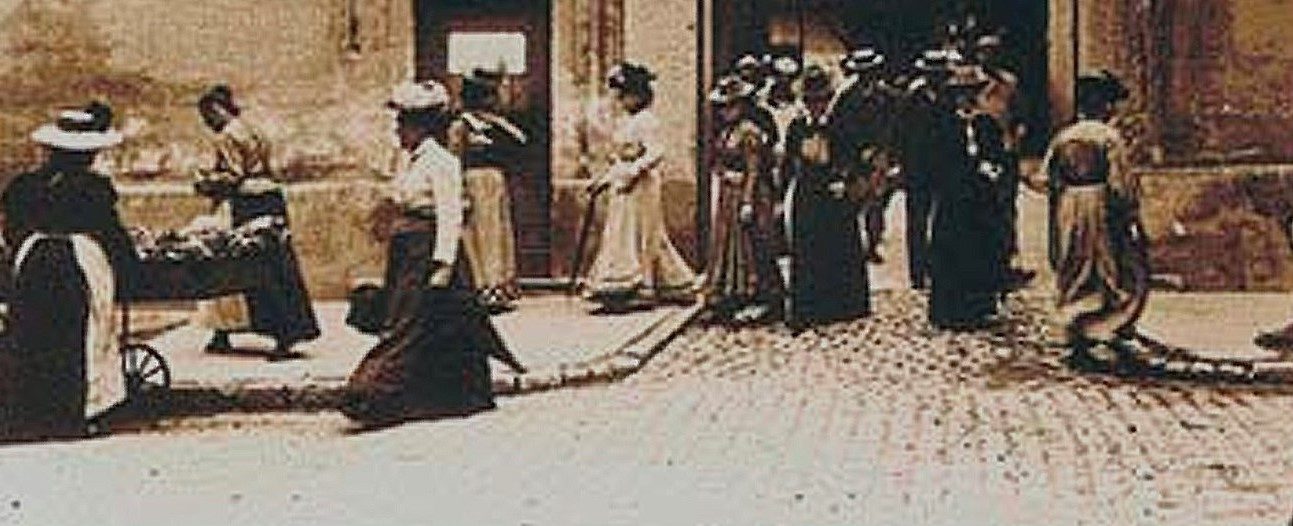United Kingdom, Australia, 1971
Directed by Nicolas Roeg
With Jenny Aguter (the white girl), Luc Roeg (the white boy), David Gulpilil (the black boy)

A young white boy playing in the schoolyard, a teenage white girl learning to sing in a choir, a middle-aged man walking and wandering in the streets, a housewife cooking: snapshots of a day in Sidney before these members of an upper middle-class family gather at home at the end of the day.
The scattered vision of an ordinary Australian family gives suddenly way to what seems an improvised picnic on the fringe of the Outback but the event shockingly morphs into a horror story, as the father shoots on the boy, tries in fact to kill his two children but then doused his car with gas and shoots himself in the head.
The white girl decides to move ahead, trying to take care of her brother and to convince him everything is going to be fine and that she knows where to go. Of course, she doesn’t and the walk turns into an ordeal that constantly imperils their lives.
But they meet a black boy who is wandering in the wild, walking quietly and hunting ceaselessly. He is an Aborigine doing his walkabout, that ritualistic journey undertaken on one’s own to learn traditional ways of surviving in order to become a man, a cultural fact whose definition has been readily given by the film at the end of the titles. He helps them and accepts that they tag along him, even if they do not speak his tongue and do not belong there; they rather stand as an unnecessary burden in his endeavor. But the little boy is fond of the black boy who also like the white girl.
The titular walkabout, however, has not appeared with the black boy standing on the horizon – and it does not really end when the Whites and the Black part way. The film has begun with a willful distortion of any audience expectations and a deliberately disturbing use of montage and soundtrack: ordinary life is cast as a chaos that just fosters more mayhem, which makes absolutely no sense. As radio speakers drone on giving encyclopedic information and conventional advice, no insight is given to the audience who are compelled to accept that the links between the family members are broken and that the narrative would never play out as the images promise – no, this is not going to be a family drama, and no, this is not really a horror story. This is a walkabout by Whites.
Nature, beautifully photographed by the director himself (cinematography was the main job till this film of Nicolas Roeg), is captured both in its splendors (those sunsets and sunrises) and its ugliest aspects (these spooky reptiles) but without a trace of strong feelings: it just exists, a fascinating background that is never cast as paradise or hell. It is a gorgeously living place where humans must learn to adapt. The white girl and her brother manage somehow the trick in the first part of their journey, which this time fits with the conventions of an adventurous tale of survival, before taking part into another kind of travel which drives them to go further down the route of adaptation. They slowly merge with the other culture of Australia that has never been fully acknowledged and respected.
Through a bold editing the film points out to behaviors which show how close and how far the two cultures stand simultaneously. Images of the black boy chopping a killed kangaroo alternate with the work of a butcher while memories of the dead father blend with the discovery of his body by a tribe: in the most disturbing manner the audience is confronted by the clash between notionally opposed humans that force them to embrace another type of education and habits as much as the white girl and boy are compelled to follow the black boy to survive. Gestures turn out to be as important as speech – it is remarkable that the three young people find a way to understand each other in many cases even as they fail to learn their respective languages and it is astonishing how images convey striking facts and deep feelings even as the radio keeps broadcasting ideas that are completely irrelevant to the young whites’ experience.
The film even explores the most taboo and intimate bond between people: sex. A side show featuring weather scientists and their aides, working in the Outback not too far from the wandering trio (but neither group would realize they are within reach of each other), emphasizes how sexual desire shape behaviors, in a clear caricature of manliness. But radical cuts between the gaze of the white girl and the body of the black boy have already charged the atmosphere for the audience. This walkabout is also about the awakening of young people to sex and love, beyond cultural barriers and focused on personal and sincere sentiments.
The film likes to fuel malaise and astutely suggests that the black boy could act malevolently; but what he eventually does is a dance to ask the white girl for marriage. Sex is far more challenging that a spear and the girl is now confronted to her own desire. She chooses to run away but the way she bids him goodbye is ambiguous and heralds the shocking epilogue. Years have gone by and she is now a married woman listening to the career plans of her husband – the movie, in another unnerving switch from one part to another, has cut images of the Outback right into a series of shots where the camera tails a dashing young man coming from nowhere and mimicking the wanderings through Sidney streets of the father in the prologue before disclosing who he is and what has happened to her. But what she thinks is quite different: readily illustrated by the film, her thoughts focus on the carefree, pantheist life she could have had with the black boy and her brother.
The happy end is not that happy. At one point, the little white boy complains that stories, especially when they feature so-called super-heroes, are boring, since the lead character would always find a way out of troubles and prevail. But are they too super-heroes, he asks his sister? She hopes so but their story owns nothing to the rules and expectations of the super-heroes tales and not so much to those of the coming-of-age stories Western world has churned out in books and films. Walking through Nature, they have found deeper truths and truest desires in the Outback than what the white culture would have offer them – indeed, what sets it apart from the Aborigine experience is basically technology and the sense of power it yields (look at the way the black boy hunts and compare to the deafening and gory hunt a white man carries on). Roeg never goes to the most obvious, simple, relatable solution in his narration – he blissfully builds a disruptive, disquieting and dissenting vision challenging the audience as he questions the meaning of a narrative, the worth of a culture and the need of individuals.

